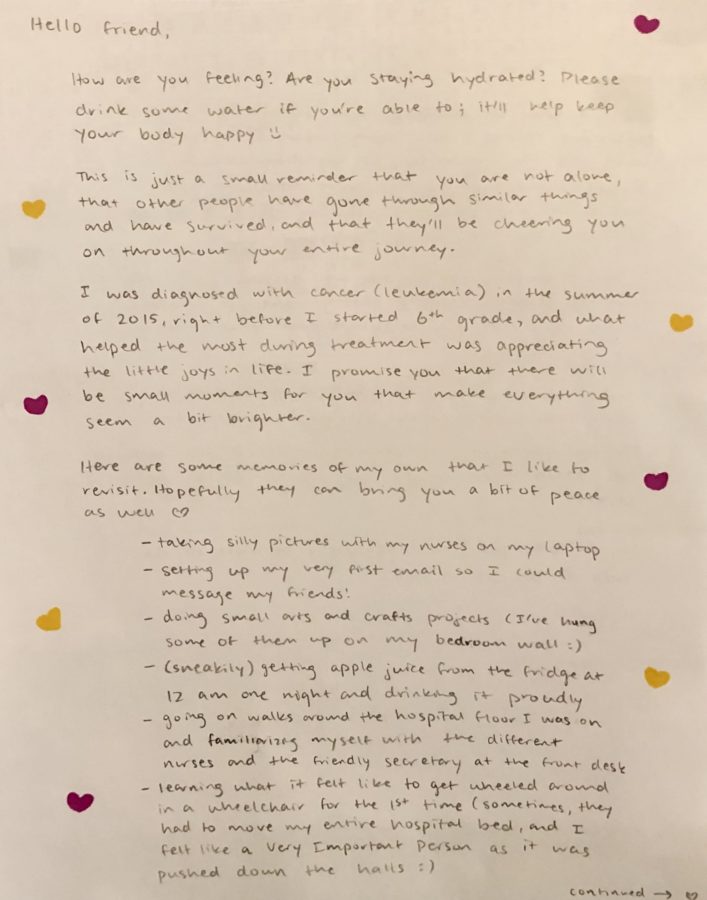By Tiffany He and Melinda Xu, Co-Managing-Editors
The Spoke surveyed ten homerooms regarding their response to start times, separated by grade level and chosen randomly. In total The Spoke collected 161 responses.
For the past three years of her high school career, senior Alexis Malamas has woken up to mostly dark skies. With an alarm going off at 6:15 a.m., she would get ready for the school day, often skipping breakfast in the morning rush. This year, her schedule has changed. She sleeps in to 6:45 a.m. which still gives her time to make herself breakfast before walking to school.
“Personally, I can’t fall asleep very early, and I need to get work done late at night. The later start time has increased the amount of time I spend sleeping drastically,” Malamas said.
This shift in daily routine is just one of several adjustments to the school day that high school students have experienced this year due to the new, district-wide decision that pushed forward start times.
Passed in the spring in a 7-2 vote from the school board, the new decision has high school starting at 7:50 a.m. and ending at 2:50 p.m.; middle school starting at 8:27 a.m. and ending at 3:10 p.m.; and elementary school starting at 9:10 a.m. and ending at 3:45 p.m.
Principal Amy Meisinger said that the main reason the school began to consider later start times were teenagers’ needs for sleep, which is often on a different circadian rhythm than adults.
“A number of other districts are currently studying and anticipate going to a later start time to try and best meet teenagers’ needs for sleep and biorhythms in terms of when (they) get tired and (how their) natural body cycle works, so that was a big part of the impetus behind it,” Meisinger said.
The American Psychological Association states that the optimal amount of sleep for adolescents is nine and a quarter hours nightly, yet over half of teenagers from 15 to 17 years old get only seven or fewer hours. In addition, teenagers’ different biological clocks mean they prefer sleeping later in the night and waking up later in the morning. By pushing forward start times, the school hopes to allow students to follow this natural clock and get more sleep.
According to a survey conducted by The Spoke, students’ self-reported average hours of sleep per night has shown a statistically significant increase of 0.24 hours from this year to last year, as seen in Figure 1. However, even the increased average, at about seven hours, is well below the recommended amount.
For sophomore Vincent Salvati, the increase still produces meaningful impacts.
“I honestly think the start times are a welcome change, as before, the starting time was just unreasonable. I’ve been able to sleep in by a substantial amount, and I’m happy that I can catch the bus at a later time,” Salvati said.
In fact, just the later start time alone seems to help students to feel slightly more awake. As seen in Figure 2, when asked to rate their alertness in class on a scale from one to five, students had a statistically significant average response of 3.31, meaning that they are feeling more alert, though only slightly.
Senior Shandia Lewis believes that the start times have benefited her and the school community, even if it’s not just through more sleep.
“I feel like everyone has a little more energy, and I think the day goes by a little bit quicker now that it starts 30 minutes later,” Lewis said.
For junior Denis Corr, however, the benefit comes mostly from the added sleep.
“I like it because I get to sleep in just a little bit more,” Corr said. “It’s nice to wake up a little later.”
Parents, too, have felt the impacts of the new start times.
For Sherry Han, who has two sons in high school and elementary school respectively, the changes have eased some of her concerns about student sleep.
“I always worry about those kids who always need more sleep and sleep so late,” Han said. “To have a half hour more really helps a lot. I think it is very beneficial for the high school students.”
Other parents disagree. Syed Haider has four children, two of which are in elementary school, and two are in middle school and high school respectively. For Haider, the added sleep is not worth the setback in their daily schedules.
“Everything is delayed,” Haider said. “I think that the earlier time that we had was much better. They were getting a lot more time in the afternoon to get their homework done.”
Impact on Sports
The new start times has also impacted student sports. In particular, the athletics department now has to dismiss athletes early from eighth period to attend away games. To organize the dismissals, the school developed a strategy where schools are split into either a 2:20 p.m. dismissal time or a 2:30 p.m. dismissal time. Athletics director Kevin Pechin worked closely with members of administration, transportation and security to coordinate this new scheduling.
“The makeup of our league is such that some schools are farther away than others. If we are playing Garnet Valley, which is a longer ride, that’s the earliest dismissal we have at 2:20. But if we are playing a team like Marple Newtown or Harriton or Lower Merion, which are a bit closer, we dismiss them at 2:30,” Pechin said.
To minimize the impact on class, administration also tried to give teachers who are coaches eighth period free. The new early dism issal policy has also increased the number of student requests for eighth period free, particularly those on sports teams, but such accommodations were not possible for all students, including senior tennis player Hannah Lowe.
“We get pulled out at 2:30, and I have band eighth period,” Lowe said. “I (also) do know a lot of people on the team who have core classes eighth period, and they are missing tests and quizzes.”
According to head football coach Matthew Diamond and head boys’ soccer coach David Zimmerman, the changes have had minimal impacts on performance and practices in their sports.
“Our football team seems to have adjusted fine to the change. I have not noticed an effect for my players as far as a change in energy or performance,” Diamond said.
Zimmerman credits this easy transition to how small the time change, only thirty minutes, is. In addition, any negative effects of early dismissal are lessened by the low number of away games for these two teams.
“We have 18 regular season games, so this year we have 10 away (games), but some of those are at night and some are on Saturday, so the actual number of games that we play away that require an early dismissal is something like five,” Zimmerman said.
For football, it is much the same. According to junior football player Michael Costigan, most of their games are at night and do not require early dismissal. Nonetheless, different sports play different amounts of games and the early dismissal could present a problem to other sports besides soccer and football.
“It’s gone fairly well. No one has a crystal ball, so our biggest fear is that there was something that we overlooked or didn’t see,” Pechin said. “We’re in the infancy of this, and we haven’t gone through winter and spring yet, and there’s bound to be a hiccup here and there, but that goes with unknown territory.”
Other Scheduling Changes
Besides the schedule adjustments for sports, the administration also changed the bell schedule, moving the lunch periods from between fifth and sixth periods to between fourth and fifth period to prevent lunch times from being too late. Beyond this change, nothing was altered in terms of instructional time and time between periods.
However, anticipating some of the scheduling issues for teachers, the administration has switched the duty day times for teachers. Previously, teachers were required to arrive 10 minutes prior to the beginning of the school day and stay 25 minutes afterwards. The new schedule now requires the teachers to instead arrive 25 minutes before and leave 10 minutes afterwards.
“We switched it so if (teachers) have kids, they can get out of here soon after the students are dismissed,” Meisinger said.
Future possibilities
In terms of further changes, the district is focusing on evaluating the effects of the new start times before proposing anything new. According to Director of Curriculum, Instruction, Staff Development and Planning Wendy Towle, the district plans to ask students to take the same survey they distributed last spring to “see if they can draw any conclusions about the new start times and students’ sleep and school habits.” The results from last year will be used as a baseline measure for comparison. But at the moment, the school board does not have plans to make another change.
“There needs to be an opportunity for the shift to settle in in order to assess how this change is working prior to considering an additional change,” Towle said.

























































































